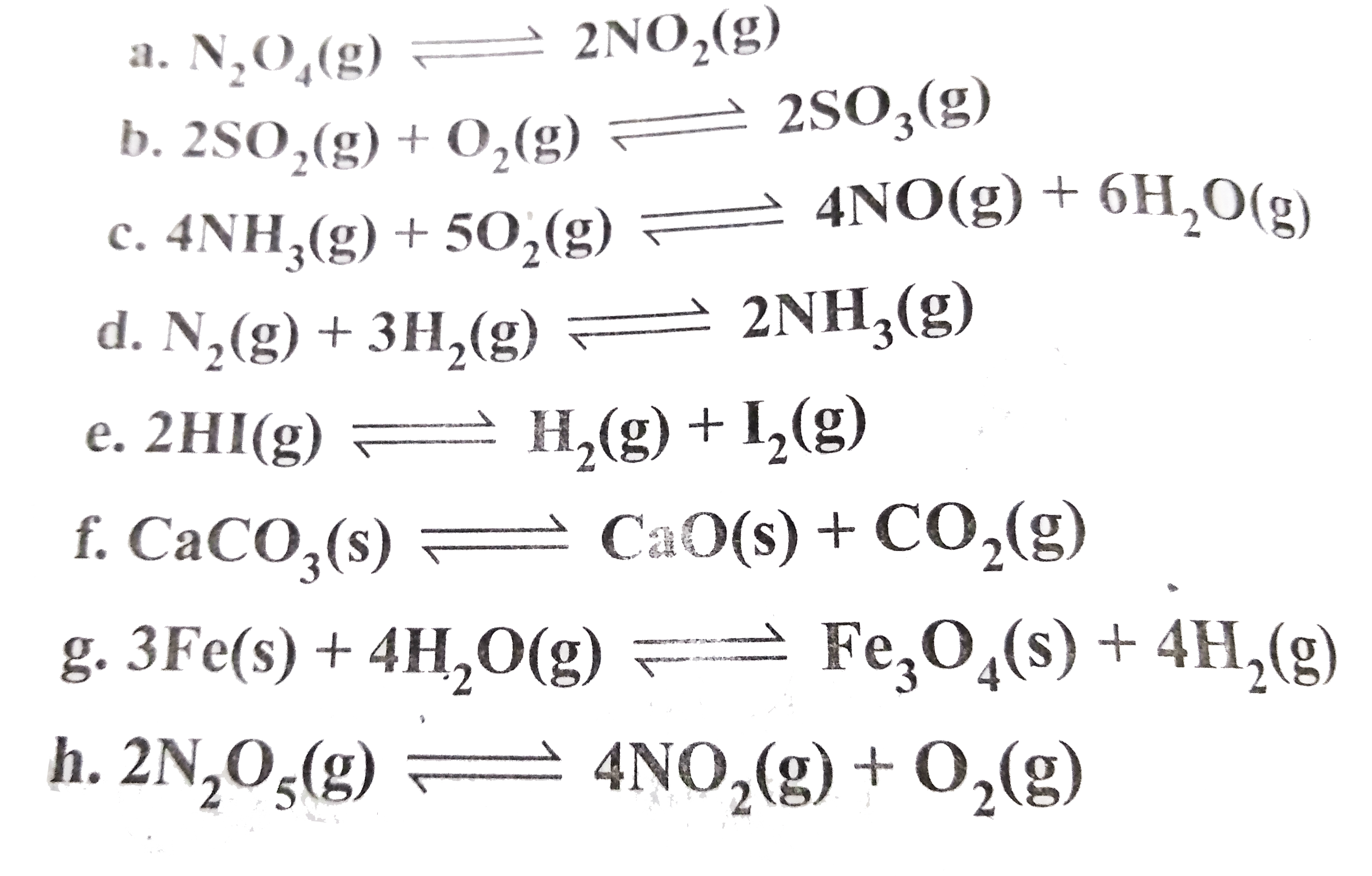For the system 3A+2B⇔ C, the expression for equilibrium constant is
[3A]×[2B][C]
[A]3×[B][C]
[C][A]3×[B]2
[C][3A]×[2B]
The correct Answer is:C
To derive the expression for the equilibrium constant for the reaction 3A+2B⇌C, we will follow these steps:
Step 1: Write the balanced chemical equation.
The balanced chemical equation is given as:
3A+2B⇌C
Step 2: Identify the products and reactants.
In this reaction:
- Reactants: A and B
- Product: C
Step 3: Write the general expression for the equilibrium constant K.
The equilibrium constant K is defined as the ratio of the concentrations of the products to the concentrations of the reactants, each raised to the power of their respective stoichiometric coefficients.
Step 4: Apply the stoichiometric coefficients to the equilibrium expression.
For the reaction:
- The stoichiometric coefficient of C is 1.
- The stoichiometric coefficient of A is 3.
- The stoichiometric coefficient of B is 2.
Thus, the expression for the equilibrium constant K can be written as:
K=(C)1(A)3(B)2
Step 5: Simplify the expression.
Since the exponent for C is 1, we can simplify the expression to:
K=(C)(A)3(B)2
Final Answer:
The expression for the equilibrium constant K for the reaction 3A+2B⇌C is:
K=(C)(A)3(B)2
---
The balanced chemical equation is given as:
3A+2B⇌C
In this reaction:
- Reactants: A and B
- Product: C
The equilibrium constant K is defined as the ratio of the concentrations of the products to the concentrations of the reactants, each raised to the power of their respective stoichiometric coefficients.
For the reaction:
- The stoichiometric coefficient of C is 1.
- The stoichiometric coefficient of A is 3.
- The stoichiometric coefficient of B is 2.
K=(C)1(A)3(B)2
Since the exponent for C is 1, we can simplify the expression to:
K=(C)(A)3(B)2
The expression for the equilibrium constant K for the reaction 3A+2B⇌C is:
K=(C)(A)3(B)2
Topper's Solved these Questions
- EQUILIBRIUMBOOK - AAKASH INSTITUTE ENGLISHCHAPTER - EQUILIBRIUMEXERCISE - ASSIGNMENT (SECTION -A)
50 Videos
- EQUILIBRIUMBOOK - AAKASH INSTITUTE ENGLISHCHAPTER - EQUILIBRIUMEXERCISE - ASSIGNMENT (SECTION -B)
35 Videos
- EQUILIBRIUMBOOK - AAKASH INSTITUTE ENGLISHCHAPTER - EQUILIBRIUMEXERCISE - TRY YOURSELF
52 Videos
- ENVIRONMENTAL CHEMISTRYBOOK - AAKASH INSTITUTE ENGLISHCHAPTER - ENVIRONMENTAL CHEMISTRYEXERCISE - ASSIGNMENT (SECTION-D) (Assertion - Reason Type Questions)
4 Videos
- GENERAL PRINCIPLES AND PROCESSES OF ISOLATION OF ELEMENTSBOOK - AAKASH INSTITUTE ENGLISHCHAPTER - GENERAL PRINCIPLES AND PROCESSES OF ISOLATION OF ELEMENTSEXERCISE - Assignment (Section-D) Assertion-Reason Type Question
15 Videos
Similar Questions
For the reaction, A+2B⇔C, the expession for equilibrium constant is
View SolutionThe synthesis of ammonia is given as:
N2(g)+3H2(g)⇔2NH3(g),ΔHɵ=−92.6kJmol−1 given Kc=1.2 and temperature (T)=375∘C
The expression of equilibrium constant is
View SolutionThe concentration of a pure solid or liquid phase is not include in the expression of equilibrium constant because :
View SolutionFor the reaction
N2+3H2⇔2NH3
and 12N2+32H2⇔NH3
write down the expression for equilibrium constants Kc and K′c. How is Kc related to K′c?
View SolutionWrite the expression for equilibrium constant for the following reactions. If the concentrations are expressed in molL−1, give the units in each case.
a.
View SolutionGive the mathematical expression for the equlibrium constant Kc for the reaction.
2SO3(g)⇔2SO2(g)+O2(g)
View SolutionThe equilibrium constant for the reaction
N2+3H2⇔2NH3 is K , then the equilibrium constant for the equilibrium 2NH3⇔N2+3H2 is
View SolutionWrite the expressions for the equilibrium constant Kc for each of the following reactions.
Fe3+(aq)+3OH−(aq)⇔Fe(OH)3(s)
View SolutionWrite the expressions for the equilibrium constant Kc for each of the following reactions.
I2(s)+5F2⇔2IF5
View SolutionFor A+B⇔C+D , the equilibrium constant is K1 and for C+D⇔A+B, the equilibrium constant is K2. The correct relation between K1 and K2 is
View Solution
